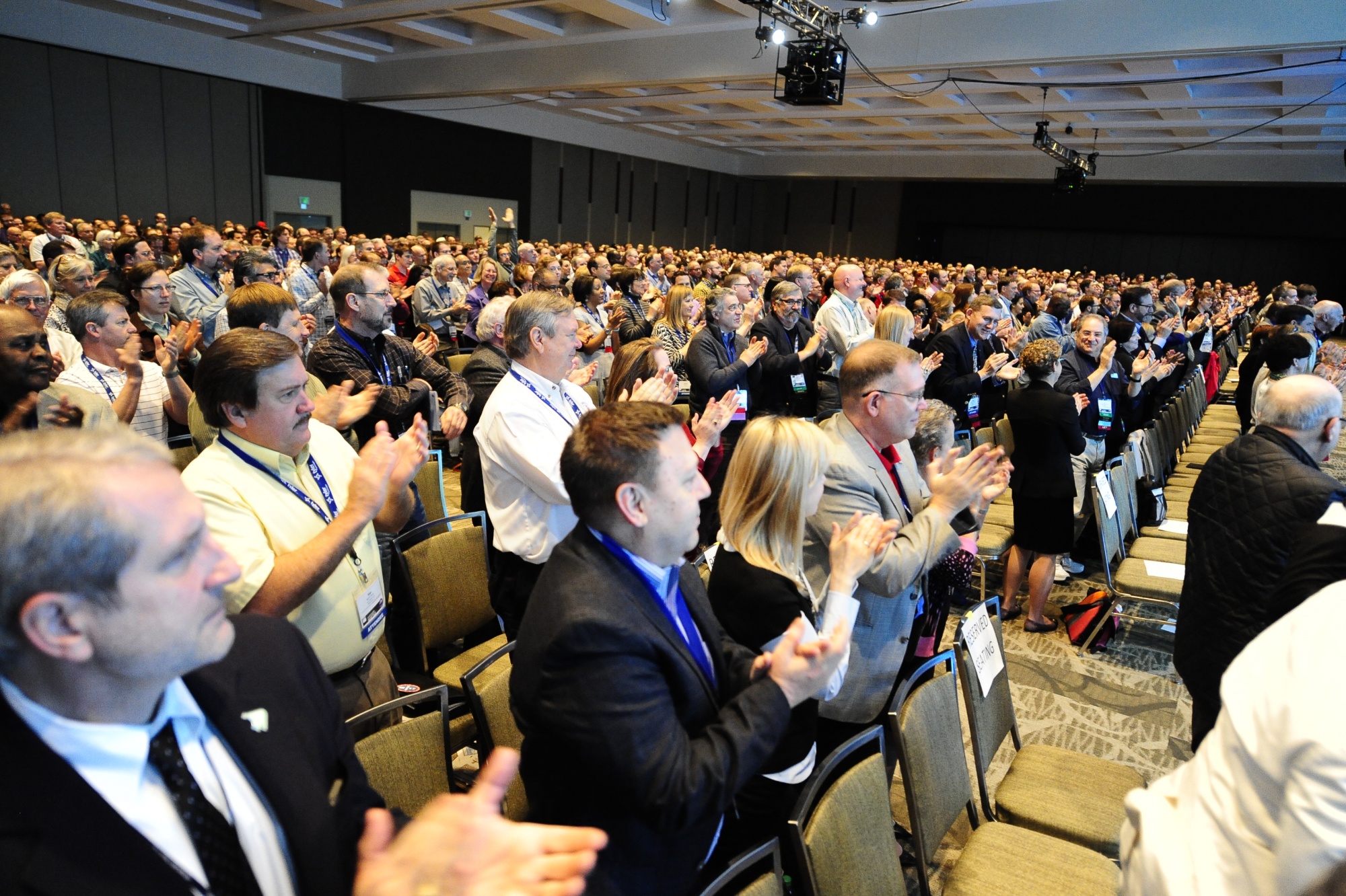The American Planning Association's 2015 National Conference has launched in Seattle, with more attendees than any event since before the recession.

The headline prior to the commencement of the APA National Conference on April 18 in Seattle, Washington was that the event would draw 6,200 attendees. By April 19, APA President Bill Anderson, FAICP, was on stage prior to the event's keynote address quoting an expanded attendance figure of 6,400. The 2015 version of the APA's premier event, in fact, has drawn the second-largest number of attendees in the event's history. Only Las Vegas, in 2008, drew more.
Theories are flying about why this year's event is so popular. Anderson followed the attendance statistic by speculating that it's proof of the profession's recovery from the recession. Surely, cities, counties, and states that only three or four years ago might have flirted with bankruptcy know have enough cash on hand to send planners on a flight to the upper left-hand corner of the country to get caught up on the state of the art and best practices of the field.
The attendance figure also speaks well of Seattle's charms as a host city, full of relevant planning case studies. Paul Inghram, local co-host of the event's local host committee, describes Seattle as an example of the trends in planning around the country. "People look to Seattle to see what we're doing from a planning standpoint," says Ingraham, citing sustainable environmental planning, technology innovation, and growth as some of the areas Seattle and the Pacific Northwest has shown leadership in the practice of planning.
Inghram also notes that Seattle and the Pacific Northwest boast a well-populated, homegrown culture of planning. "We have a big, active [APA] chapter in the state, beyond Seattle," says Inghram. According to Inghram, those ranks are supplemented by local attendees coming from the non-planner ranks of neighborhood advocates, social services professionals, housing experts, engineers, planning commissioners, and land use attorneys.
At least one attendee—in jest, to be sure—has speculated that legal marijuana in Washington and legal everything in Las Vegas have possibly contributing to the record breaking pace set by the events held in those cities.
But it's impossible to ignore the evidence of a stronger economy at the conference. A strong economy inspires larger numbers of people to congregate, so lines at registration and on the Washington State Convention Center's escalators mimic freeways flush with commuters or shipping tankers queued up outside the nation's ports. Event planners (ahem) have redoubled their efforts and redistributed administrative duties in response to the demand for the conference's services.
When the crash came in 2008, I was working the planning beat in California—I heard more than one planner look for the silver lining of slashed budgets, early retirement, dormant developers, and extinct redevelopment by talking about taking a good, hard look at our priorities and preventing the kind of mistakes in planning, design, and engineering that contributed to the recession. In the most optimistic possible take on the disaster that was settling around us all, the recession offered planning and its related fields a moment to pause and collect ourselves.
That moment is over. Now a growing number of planners has gathered in the fastest growing city in the United States. Now that the signs of recovery are all around us, let's hope the ideas, projects, and innovations that make the boom times exciting recall the lessons and improvements of the recession.
As stated by keynote speaker Ron Sims, former secretary of the Department of Housing and Urban Development to kick off the event this morning: "Do not tell me you are in a profession that is indifferent to consequence. There is no such thing as an innocent plan." Let's remember that message about the power of planning in the good times, as with the bad.


Planetizen Federal Action Tracker
A weekly monitor of how Trump’s orders and actions are impacting planners and planning in America.

Chicago’s Ghost Rails
Just beneath the surface of the modern city lie the remnants of its expansive early 20th-century streetcar system.

Amtrak Cutting Jobs, Funding to High-Speed Rail
The agency plans to cut 10 percent of its workforce and has confirmed it will not fund new high-speed rail projects.

Ohio Forces Data Centers to Prepay for Power
Utilities are calling on states to hold data center operators responsible for new energy demands to prevent leaving consumers on the hook for their bills.

MARTA CEO Steps Down Amid Citizenship Concerns
MARTA’s board announced Thursday that its chief, who is from Canada, is resigning due to questions about his immigration status.

Silicon Valley ‘Bike Superhighway’ Awarded $14M State Grant
A Caltrans grant brings the 10-mile Central Bikeway project connecting Santa Clara and East San Jose closer to fruition.
Urban Design for Planners 1: Software Tools
This six-course series explores essential urban design concepts using open source software and equips planners with the tools they need to participate fully in the urban design process.
Planning for Universal Design
Learn the tools for implementing Universal Design in planning regulations.
Caltrans
City of Fort Worth
Mpact (founded as Rail~Volution)
City of Camden Redevelopment Agency
City of Astoria
City of Portland
City of Laramie




























